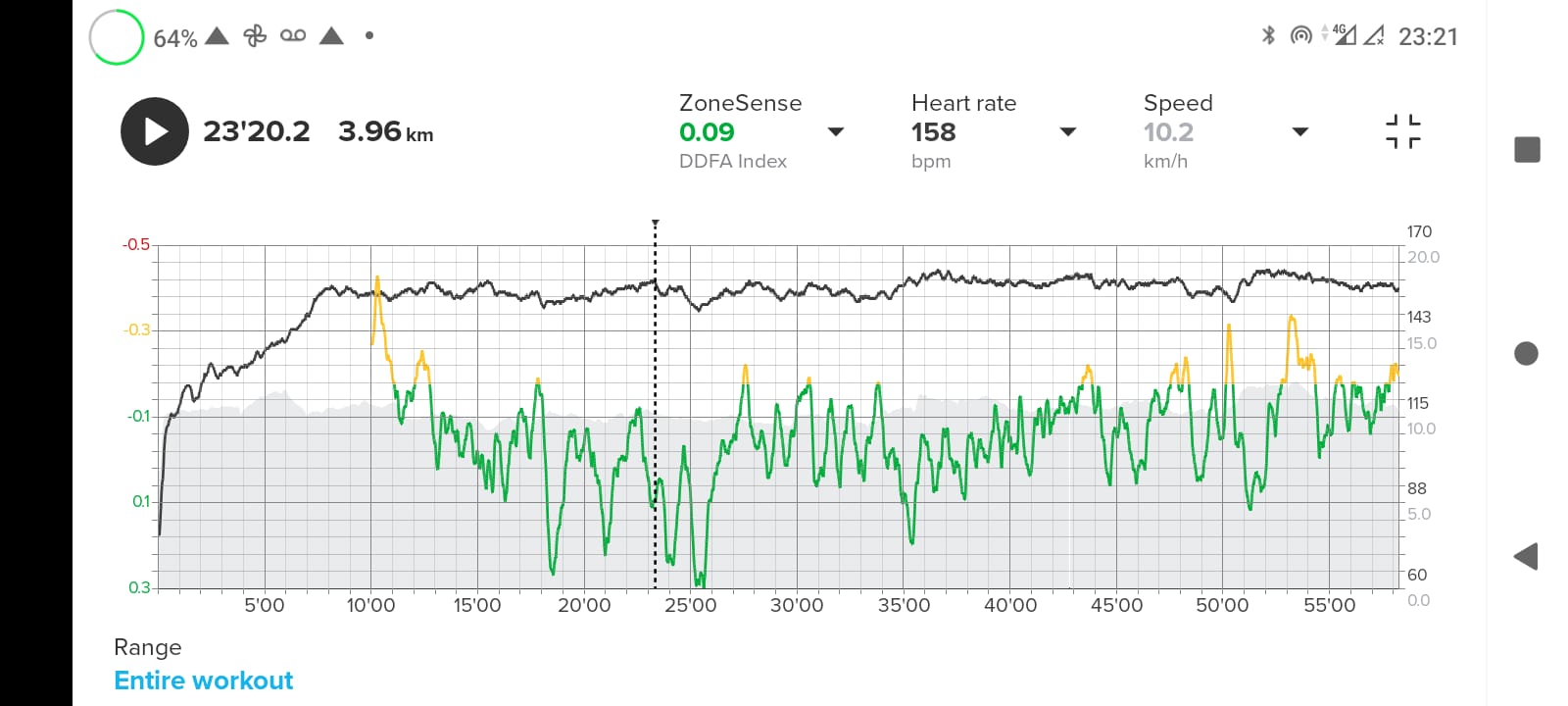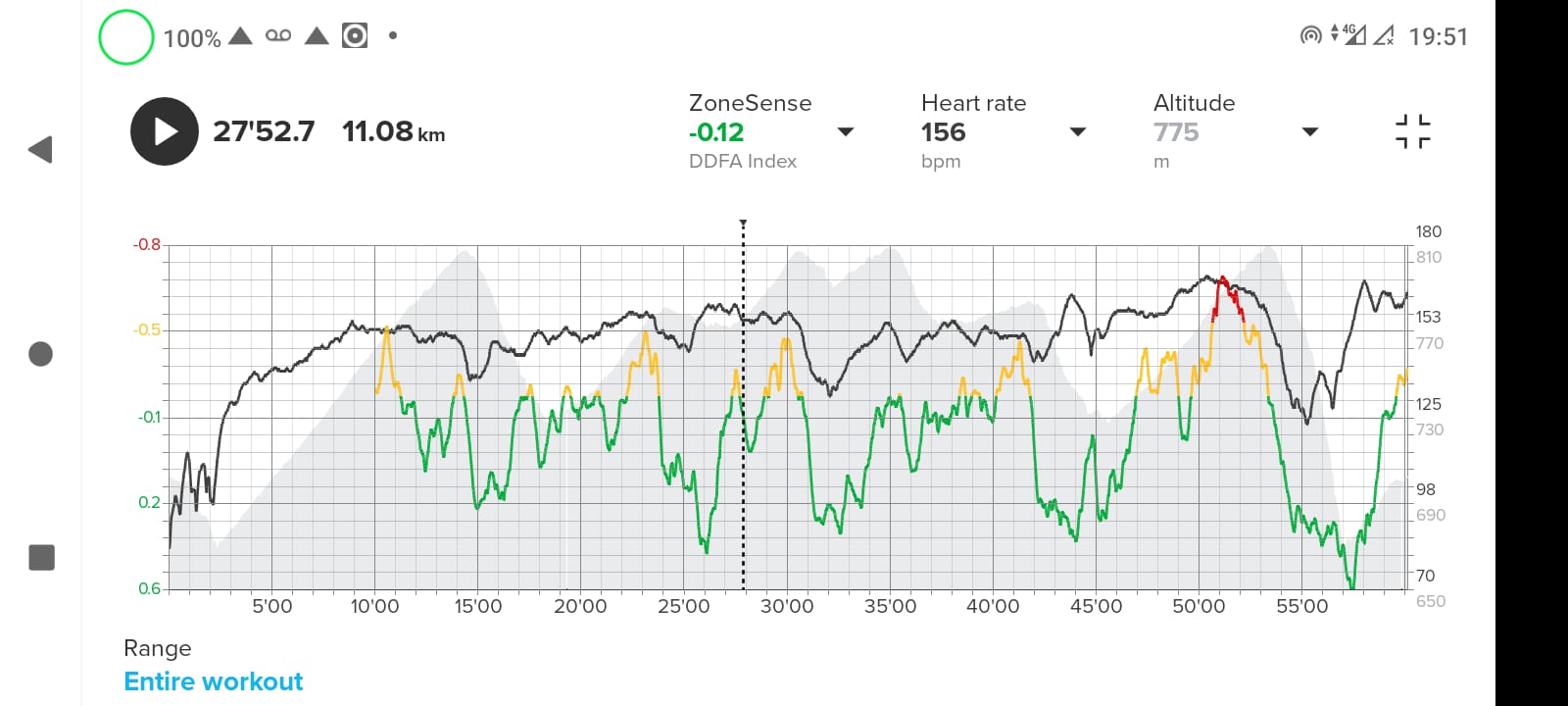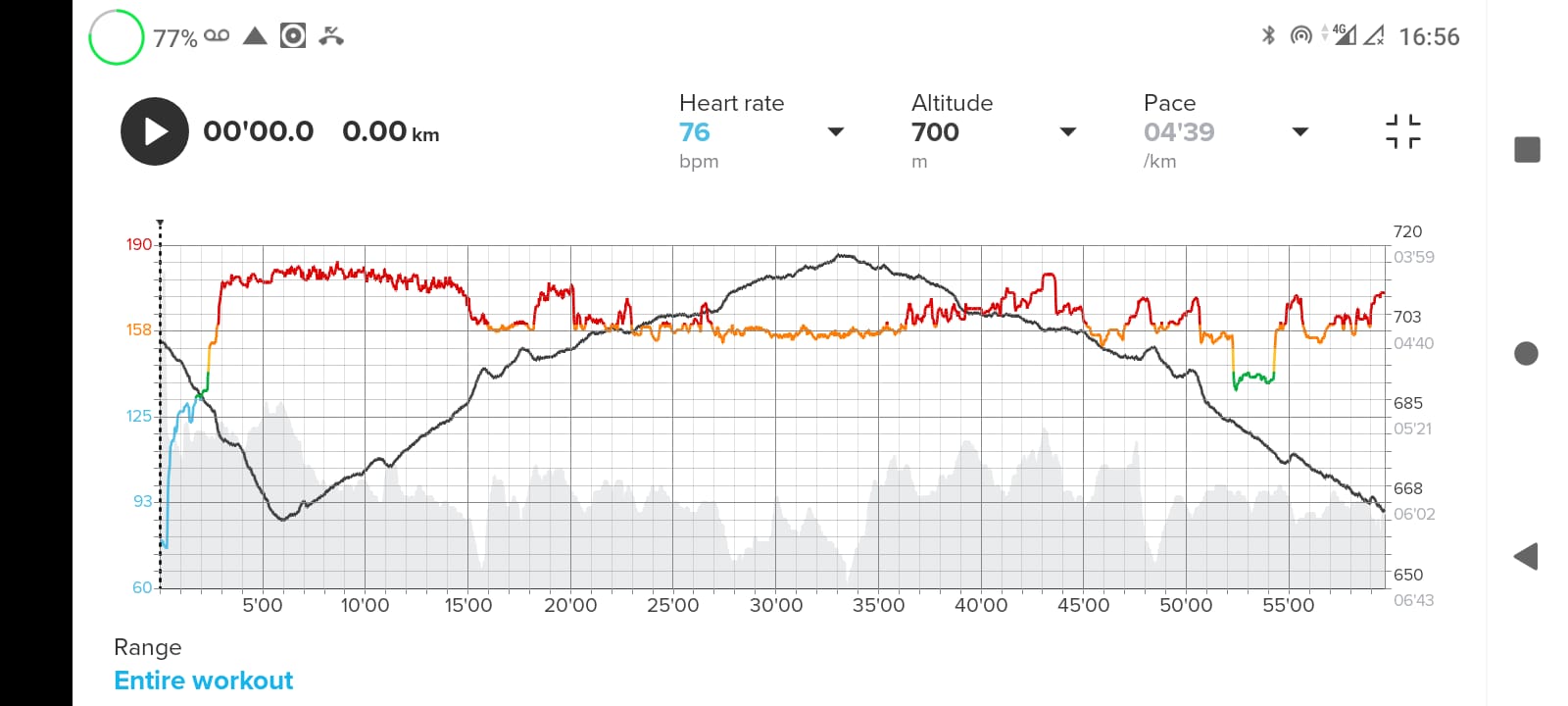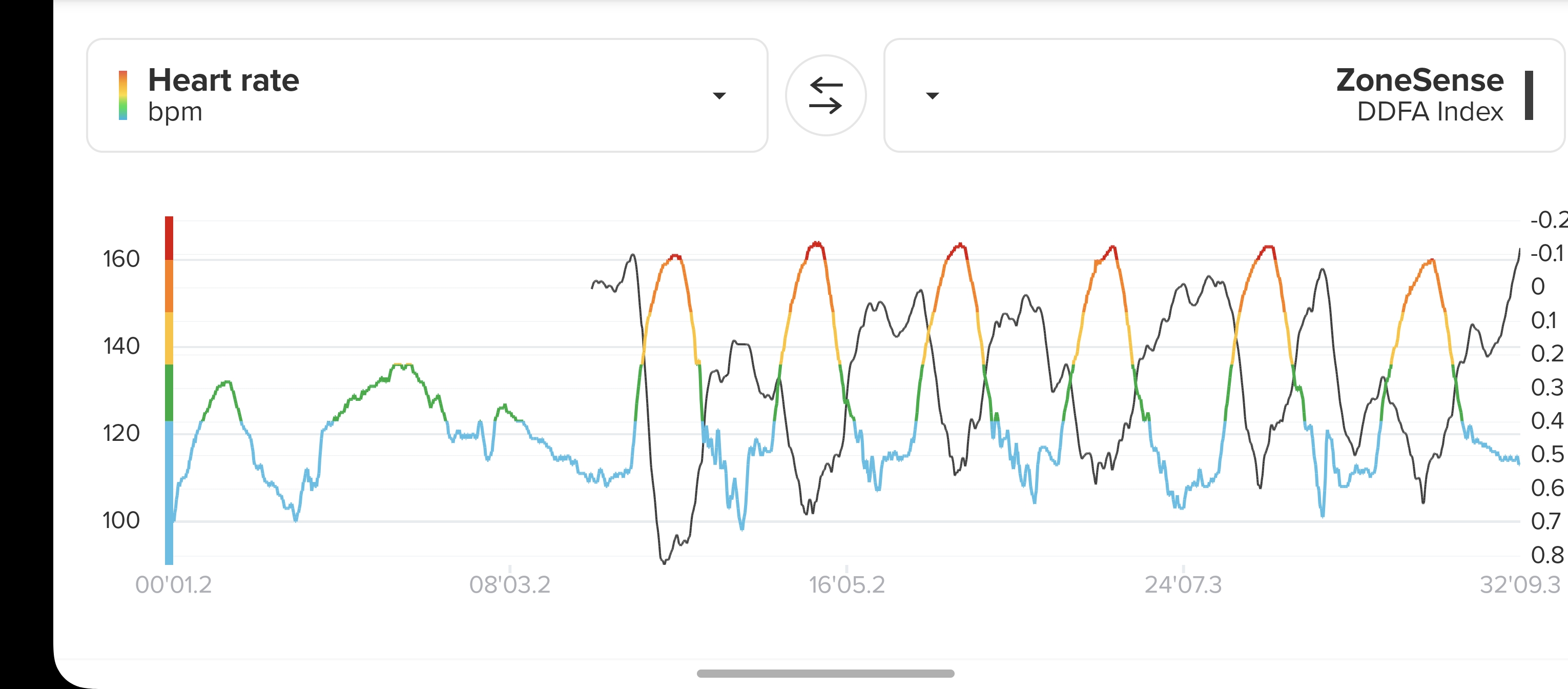Zonesense readings
-
@Ghost I never said its nonsense, if you read my last post you can see that I also think its not ok to call Zonesense nonsense!
-
@VoiGAS my apologies. Edited.
-
@Dragan There are six in-depth videos demonstrating that it’s 100% reliable, proven, effective, and efficient — all validated by solid research. RPE, which is widely used by elite athletes to manage training intensity through internal perception, is the closest proxy to what ZoneSense captures. That said, I fully respect those who feel they’re losing touch with familiar methods. Sticking with what makes training enjoyable is part of what keeps sport meaningful.
-
@Dragan The example that you provided is not what ZS is intended for, I think you realize that now. I completely agree with @Ghost, ZS is a game changer for me and I use ZS for most runs. (Not for 2 min hill intervals that I just finished a block of). After using RPE to gauge my runs for well over a decade ZS matches my RPE well. Where ZS is especially useful are long runs where I feel fatigued by the end and don’t think I should. ZS confirms my feelings are accurate. I will use ZS to better adjust my efforts at the beginning of ultras.
-
@ChrisA I think for a generation of Whoop/Garmin/Oura kids who cannot remember a time when the only running watch was a timex ironman this can probably be very frustrating. We have so many people now that rely on their watches to tell them what to feel or think about a workout. I think it is super important for any athlete to not rely on algorithms and upsold company metrics to tell you how a run went.
The magic of Suunto and the runners that it sponsors like Courtney Dauwalter is that they will not promise you gimmicks like body battery and stress scores. They will tell you to learn how to listen to your body as you start to build fitness. They will tell you to check in with your body daily to determine how you feel rather that look at a smartphone app.
RPE mixed with heart rate tracking can be a huge part of learning how to train. Zone Sense helps me confirm that information. But it is not a magic button and it does take some savvy and dare I say research (ie reading what kind of workout it is actually for) to understand what it is that it is tell you.
One example I have is I did a long intervals session where I thought the RPE was 9-10. The intervals were long enough to register with zonesense and how I interpreted the information was maybe I could have done a bit more.
-
@Łukasz-Szmigiel I really don’t understand the aggressive/dismissive tone attitude on this forum. It’s entirely voluntary to be here and help other people who have questions about an interest we all share.
I hope Suunto can spare some resources to answers questions, moderate, and demonstrate the community culture they want to develop.
-
@Max-Melchior did you find my response aggressive or dismissive?
-
I’ve spent hours studying all the videos and used this system for a while - but ZoneSense still seems to defy commonsense to a large and very fuzzy degree.
Starting with the chart from Dragan showing the intervals - HR goes up and ZoneSense plummets - obviously not working. Nobody can explain however how to interpret how the algorithm fails in terms of HRV and associated lactate levels.
It’s clear also that running/cycling at a relatively steady pace the line traced by DDFA index is still WILD to the degree that most of the time it’s impossible to tell what’s due to “not working” or very strange metabolic behaviour.

Why is the DDFA Index line spiking all over the shop? What does it mean when the aerobic zone bounces like a yoyo to the bottom of the chart?
(Using here a Polar H10+ chest strap with slightly salted water applied to the strap and skin for good contact. The aerobic threshold was calculated to be 154 bpm by ZoneSense. Was “barefoot” running with a stride cadence of 180.) -
@Max-Melchior Well said! I think the aggressive/dismissive attitude is because they really aren’t very confident. ZoneSense is a bold move by Suunto but it needs more detailed clarification due to its instability. So far I’ve found the ZoneSense watch face itself appears practical when working out but the phone app graphics are scary.
-
@Ian-Beveridge there is no point in looking at the graph, what matters is just the zone you are in
-
@isazi Thank you for the clarification and simplification.
So…
New thresholds are calculated for each workout and the 3 zones are all that counts. The scales and graphs are meaningless.
Today on my two hour bike ride there was no measurement of ZoneSense thresholds in terms of heart rate. I’ve only seen this difference shown for aerobic threshold - never anaerobic threshold. Tying the two systems together like this is also very useful - when it happens - if it happens.
-
@Ian-Beveridge to be honest, also the thresholds do not matter if you are just using ZoneSense

-
Ieri sera al dal 16 km in poi stranamente la mia fascia cardio ha smesso di funzionare
-
Hi sorry for posting this here as well but there are no answer in others treads. I and others here in the forum do not get any ZoneSence data at all after the latest firmware update. Nothing on my side have change and it does not work on my Vertical och Race 2. Before the latest update work as it should. In the watch app it only states waiting for data, on iPhone app (latest beta version) it does not show up at all.
-
@isazi Okay! But don’t the ZoneSense thresholds and their shifting values inform us of anything? …or am I still stuck in an out-of-date paradigm?
-
There’s a bug with ZoneSense - in real time on the watch (Race S) it just randomly stops tracking while behind the scene it’s correctly logging changes and proper data (as viewed on the phone app). Once it stops displaying proper data it doesn’t recover during the workout.
The following screengrab shows data collected for an hour - but the watch stopped displaying the data changing from before half way through. There were calculations for both thresholds. This is the fourth time the live tracking has failed for me.

-
The ZoneSense bug - to which nobody has replied - is manifesting itself in two ways so far.
When tracking cycling the ZoneSense in real time on the watchface just stops (as reported ) but behind the scene data is still being collected and displayed in the Suunto phone app. The bug usually appears about half and hour into the workout. (one hour session)
When tracking running the ZoneSense real time data is displayed without problem over the entire one hour session. Then when accessing the data in the Suunto phone app there is absolutely no data for ZoneSense.
It’s a mess!
-
@Ian-Beveridge I think if you consistently see a ZS Aerobic Threshold below your set AT you might want to think about changing your zones. I typically use ZS for Recovery, Endurance and Steady State runs (Steady State intervals are no less than 20 min.) I use Power for short hill intervals and either ZS or Power for Tempo intervals, which are 8-10 min for me.
When I am fresh my set AT and LT are very close to those I see in ZS. However, during most of my training I am not fresh and my ZS zones are typically lower. I use ZS intensity zones during my runs to help me gauge RPE as I typically will go too hard when I feel good. -
@Ian-Beveridge I have been having some issues with my Smartsensor disconnecting and ZS stopping. I don’t know if this is my belt or a firmware issue but I have reported the problem. It might be related to yours as well.
-
@Brad_Olwin Thanks for the feedback!
I was having a few dropouts of my chest strap - which never happened until recently - so I replaced the battery even though the existing one had only been used a few months and I tightened up the strap a bit and used more electrolyte. The glitches in connection disappeared but the ZoneSense problems continued.Here’s a screengrab of one run I did - I was dramatically fatigued and the run was weird because I was the slowest I’ve ever been by a huge margin but my heart rate is nearly constantly in the VO2 range - though I used a mostly green zone in the ZoneSense as my guide only to find out at the end of the workout there was absolutely no ZoneSense data or threshold measurements

I’ve never been able to get the ZoneSense to measure the thresholds for running and I never get the data - despite it always working in real time.
ZoneSense in contrast frequently locks up in real time when cycling but still measures the thresholds and presents the data covering the entire workout.
My 5 Set Zone thresholds are 142 Aerobic and 160 Anaerobic
My Cycling ZoneSense values are from 129 to 145 Aerobic and 166 AnaerobicThe ZoneSense AT is as frequently above the set AT as below so I don’t change it.
